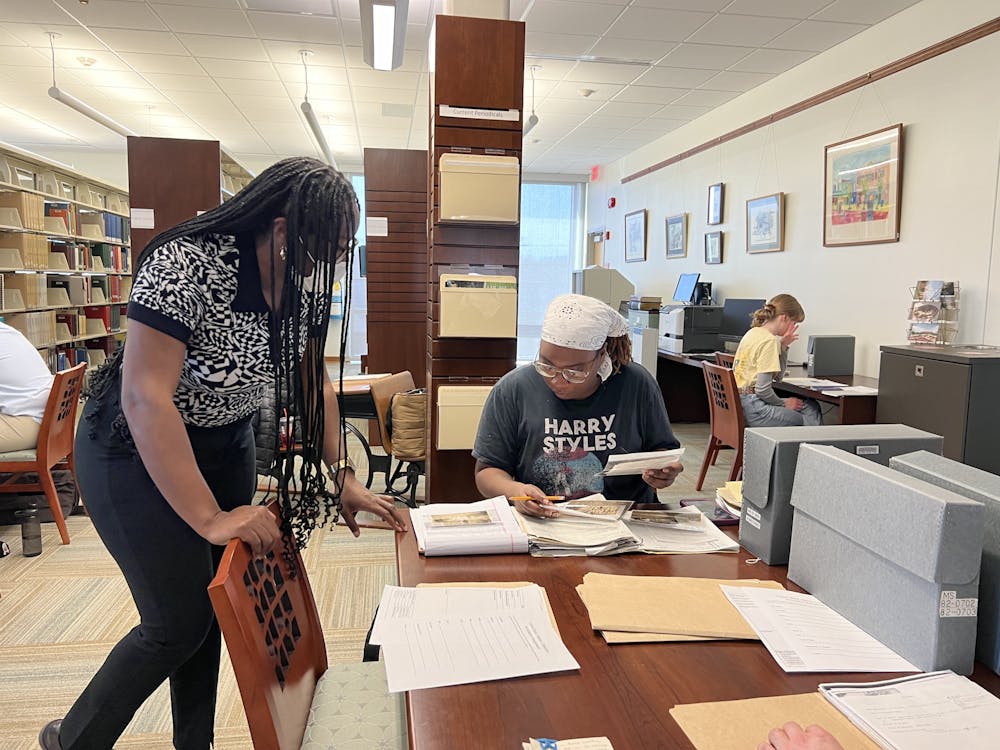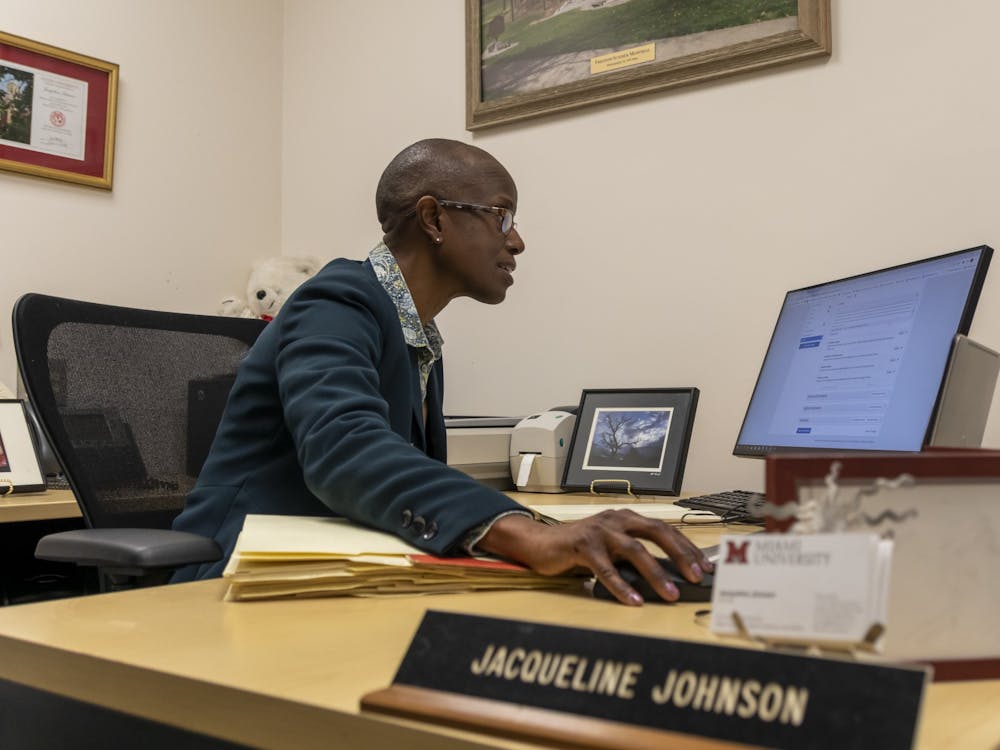The 12 yellow emergency phone kiosks scattered around campus are outdated and one-dimensional, Miami University has found. IT Services, in conjunction with the Miami University Police Department (MUPD), Miami's Physical Facilities department and Associated Student Government (ASG) will begin to phase in 30 better-equipped emergency boxes this summer to foster a safer campus environment.
Each box will cost $10,000 and will come out of IT Services' budget.
The current boxes are about 15 years old and serve only one purpose: the ability to summon emergency help or an escort when needed, according to IT services.
According to Chris Bernard, director of network engineering and telecommunications in IT Services, the new emergency boxes will have a plethora of features that are absent in the current models.
"One feature of the new phone, that the old phones don't have, is a wire broadcast system, which means in the event of a tornado warning or other warning, the phone boxes will be able to emit that warning," Bernard said.
This feature allows emergency warnings to be broadcast around campus through a speaker in the box that can be heard from 500 feet away, according to Bernard.
Lt. Ben Spilman, spokesperson for MUPD considers this PA-like system paramount to campus safety.
"The outdoor warning features are something we don't have on campus and would bring a new layer to our emergency warning systems here," Spilman said.
The new models will also have the capability to call MUPD for help at the press of a button, just as the current ones do. However, they were unable to solve the problem of prank calling, which happens regularly, according to Spilman.
"We get a lot of false alarms, where we will show up and there will be no one there," Spilman said.
The updated models are supposed to be much more aesthetically pleasing, in contrast with the stout, yellow boxes.
Enjoy what you're reading?
Signup for our newsletter
"They are one of the few remaining eyesores," Bernard said of the old emergency boxes.
Bernard described the emergency boxes that Miami plans on installing, likening them to similar devices on other college campuses.
"The new ones will be much larger, about 10 feet tall, and will have a blue light on the top of them, which will hopefully make them very identifiable," Bernard said.
Another drawback of the current models, Bernard said, is because they're becoming increasingly outdated, it's difficult to find replacement parts, as they are no longer being manufactured.
The boxes themselves aren't the only things that are behind the times.
"Some locations are kind of outdated because of construction on campus," Spilman said. "With future development on campus, some of those current call boxes are not in the best locations."
In an attempt to rectify this situation, Spilman said that Physical Facilities hired consultants to produce a campus circulation master plan. This plan, available online, highlights the areas that students most often frequent in order to place emergency phone kiosks in appropriate areas.
The new emergency phone kiosks will also double as Wi-Fi access points, projecting a 400-foot radius of wireless internet coverage that will allow strengthening of signals in green spaces and remote areas, such as Western Campus.
"For the campus population, the addition of outdoor WiFi is going to be really attractive as well," Spilman said. "That is certainly a neat feature."
However, all parties concerned are quick to acknowledge that while additional features will be nice, the main purpose of these emergency boxes is to create a safe environment.
"Our main concern is safety," junior Off-Campus Senator Max Swartz said. "But we think it is fantastic that it is also going to act as a multifunctional device."
The one drawback to these devices is the cost. They are large, technologically advanced and, naturally, expensive.
"These stations are 10 feet tall, very sturdy one-fourth inch rolled steel and weigh upwards of 500 pounds," Bernard said. "Each one will run about $10,000, but are expected to last 10-15 years.
According to Swartz and MUPD, IT Services' budget will cover the cost of the 30 planned stations, the installation of which will begin this summer and is planned to continue over the next five years. However, according to Swartz, there is speculation that every station could be installed by summer's end.
Swartz said the members of ASG understand the cause for student concern and the need for the project to be done within a reasonable timeframe.
"People seem to be in favor of fronting everything now and getting it all out of the way," Swartz said. "We just want them to know that we care about this and that we want to see it happen and that we want to see it happen, hopefully, over this summer."
Swartz, along with senior senator Rose Kaplan brought the issue to the Student Senate and helped to coordinate efforts to update emergency boxes between ASG and IT Services. He cited this as an important step in communication between ASG and other institutions on campus.
"I hope that this sets a precedence for more collaboration between student government and university officials," Swartz said.



